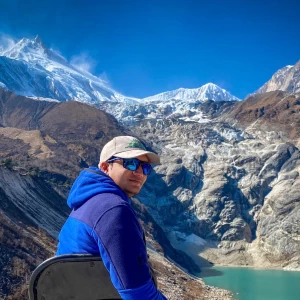Trekking routes in Nepal offer options for all levels, from easy walks to challenging climbs, with stunning landscapes and rich culture.
Nepal Trekking Routes: Amazing 11 Trekking Routes, Nepal
Table of Contents
Nepal is a trekker's paradise, known for its stunning mountains and diverse landscapes. Whether you're new to trekking or an experienced adventurer, Nepal offers something for everyone.
From easy walks to challenging climbs, the Nepal trekking routes are as varied as its geography.
Selecting the right trekking route can make or break your adventure. We'll help you find the perfect trek that matches your interests and fitness level. Also, we ensure an unforgettable journey through Nepal's incredible landscapes.
We'll explore 11 amazing trekking routes in Nepal, each offering unique experiences. Whether you're looking for breathtaking views, cultural immersion, or a tough challenge, there's a route for you. Enjoy hiking in Nepal like never before.
Also, check, Best Hike in Nepal
Why Trekking in Nepal is a Must-Do
Trekking in Nepal is a must-do. It offers an unmatched combination of natural beauty, cultural richness, and thrilling adventure. The experience is of walking through the majestic Himalayas, passing through traditional villages, and witnessing breathtaking landscapes. It is something you'll never forget.
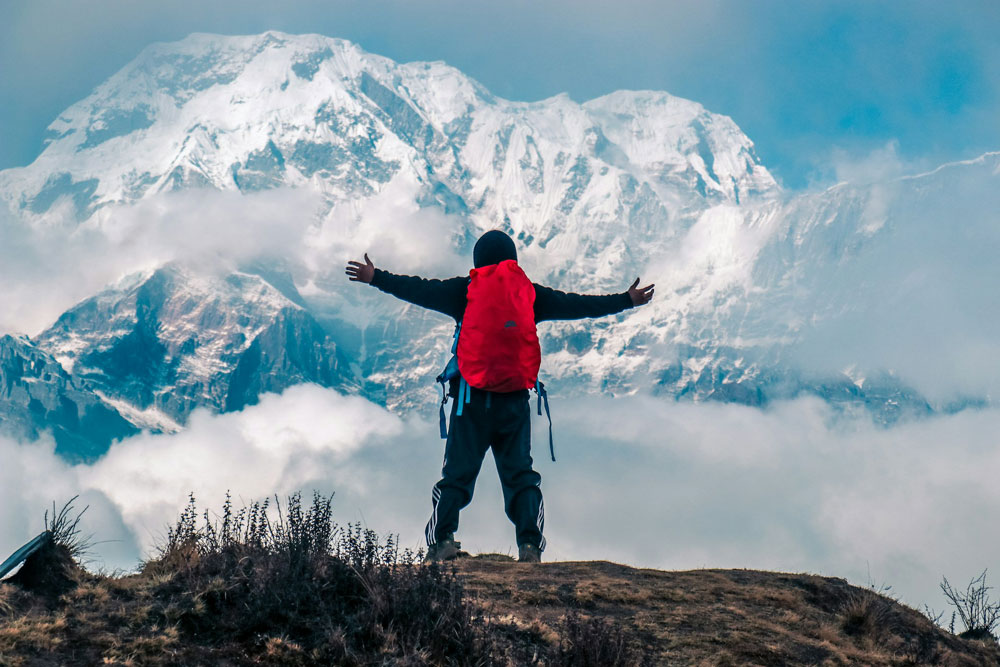
Unique Features of Trekking in Nepal
Breathtaking Landscapes:
Nepal is home to some of the world's highest peaks, including Mount Everest. Trekkers can enjoy stunning views of snow-capped mountains, lush valleys, and serene rivers. Not just Everest, the Annapurna in the west or Kanchenjunga in the far east are equally beautiful with landscapes.
Cultural Experience:
Hiking in Nepal is not just about the landscapes. It’s a journey through diverse cultures. You'll encounter different ethnic communities, each with its traditions, languages, and lifestyles.
With 125 ethnic communities all around, the major ones in the Himalayas are Sherpa, Gurungs, Tibetans, and Thakalis. Each of them has its own cultural life with distinct features.
Sense of Adventure:
Whether you're crossing high mountain passes or trekking through dense forests, each route offers a unique adventure. The thrill of exploring remote areas makes trekking in Nepal truly special. Additionally, going to high-altitude trekking passes like Thorong La (5,416 metres), Kongma La (5,545 metres), or Larke La (5,106 metres) is challenging.
Importance of Choosing the Right Route
Match Your Interests:
The right trekking route will align with what you want from your trek, whether it’s cultural experiences, nature, or adventure.
Consider Your Fitness:
Different routes require different levels of physical fitness. Choose a trek that matches your endurance and experience to ensure a safe and enjoyable journey.
Seasonal Considerations:
Some routes are better suited for certain seasons. For example, the Annapurna Circuit is best in spring or autumn, while the Upper Mustang Trek is ideal for summer.
Altitude Acclimatization:
Altitude is a significant factor in many treks in Nepal. High-altitude treks like the Everest Base Camp Trek or the Annapurna Circuit require careful acclimatization to avoid altitude sickness.
Trekking Trails for All Levels
Variety of Routes:
Nepal trekking routes accommodate all skill levels, from easy walks to challenging treks. Beginners can enjoy gentle trails like the Ghorepani Poon Hill Trek. It offers mesmerizing sunrise views over the Annapurna range.
For those looking for a moderate challenge, the Annapurna Base Camp Trek perfectly balances scenic beauty and adventure. Experienced trekkers might opt for the Everest Base Camp Trek, Manaslu Circuit, or Kanchenjunga Circuit.
Personal Preferences:
It’s important to select the right trek based on your interests. Whether you prefer the cultural immersion of the Langtang Valley Trek or the rugged adventure of the Manaslu Circuit Trek. Nepal has a perfect route for you.
11 Best Nepal Trekking Routes
Nepal trekking routes offer a wide range of hiking trails, each with unique landscapes and experiences. Here’s a look at 11 amazing trekking routes to hike in Nepal, along with a brief itinerary for each.
Everest Base Camp Trek
Difficulty: Challenging
Duration: 12 Days
Highlights: Sherpa Villages, Everest View Hotel, Tengboche Monastery, Everest Base Camp
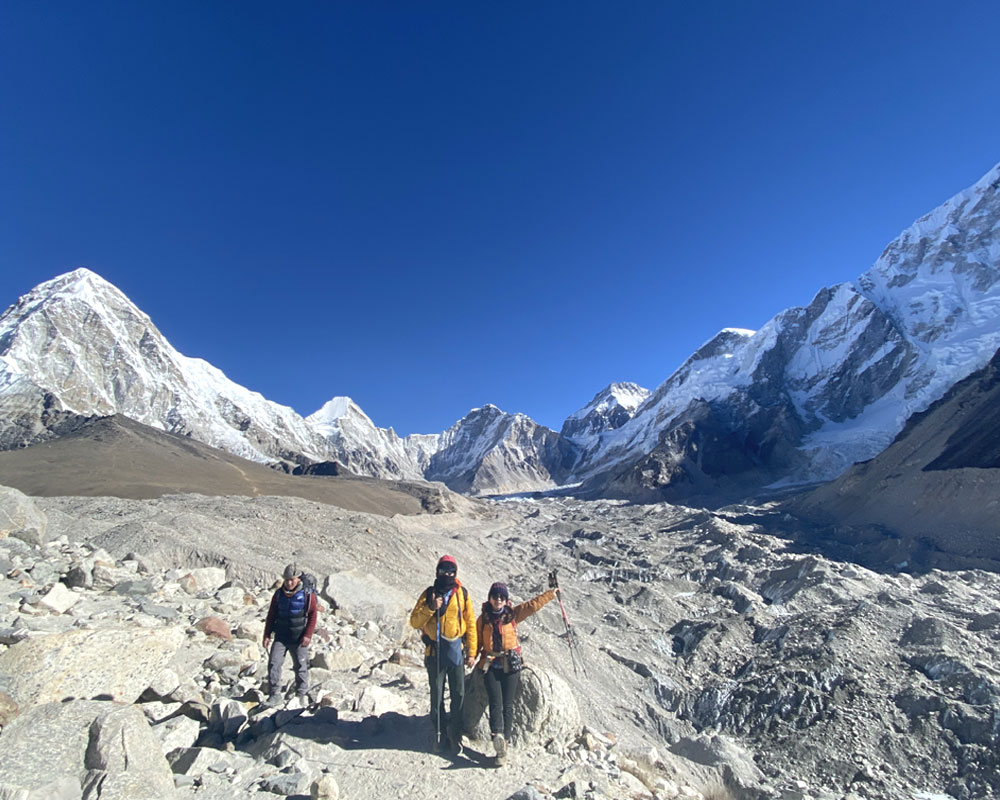
The trek to Everest Base Camp is one of the best treks in Nepal. This walk will certainly become the most rewarding experience of your life, with stunning vistas of Mount Everest and other 8000-ers, native Sherpa culture, amazing monasteries, and high-altitude flora and fauna.
This trekking tour will take you to Mount Everest base camp, which is located at 5,364 meters (17,598 feet) above sea level, and Kala Patthar, which is located at 5545 meters (18,192 ft). Every turn will reveal a scene that will please all of your senses. The Everest base camp trek is the crown gem of the trekking industry of Nepal.
Trip Inspiration:
Day 1: Fly to Lukla from Kathmandu, trek to Phakding
Day 2-3: Trek to Namche Bazaar, acclimatization day
Day 4: Trek to Tengboche, visit the monastery
Day 5-6: Trek to Dingboche, acclimatization day
Day 7: Trek to Lobuche, visit Everest Memorial
Day 8: Trek to Everest Base Camp and return to Gorak Shep
Day 9: Trek back to Pheriche
Day 10: Trek to Namche Bazaar
Day 11: Return to Lukla
Day 12: Fly from Lukla to Manthali or Kathmandu
(Additionally, you can also extend your journey to Three High Passes. To do a high pass, you will depart from base camp. It will add 3-4 days)
Annapurna Circuit Trek
Difficulty: Moderate to Challenging
Duration: 10-21 days
Highlights: Thorong La Pass, Manang, Tilicho Lake extension, Hot Spring
.jpg)
The Annapurna Circuit Trek is a popular hiking route in Nepal. This famous trek offers stunning views of snow-capped mountains like Annapurna, Dhaulagiri, Manaslu, and Machapuchhre. You’ll also pass through lush forests and traditional villages. Along the way, you’ll cross the Thorong La Pass (5,416 metres), one of the world’s highest passes.
This trek is challenging but rewarding, with each day bringing new adventures. You’ll walk through deep valleys, climb steep paths, and see incredible landscapes.
Trip Inspiration:
Day 1: Drive to Jagat from Kathmandu
Day 2: Trek to Dharapani
Day 3: Trek to Chame
Day 4: Trek from Chame to Upper Pisang
Day 5: Trek from Upper Pisang to Manang
Day 6: Acclimatization in Manang
Day 7: Trek to Leddar
Day 8: Hike to Thorong Phedi or high camp
Day 9: Trek from Thorong Phedi to Muktinath via Thorong La Pass
Day 10: Drive to Pokhara
(You can extend your trek to Tilicho Lake which can go up to 12-13 days.)
Manaslu Circuit Trek
Difficulty: Challenging
Duration: 10-14days
Highlights: Larkya La Pass, Manaslu views, Tibetan culture, Remote Tibetan-influenced villages
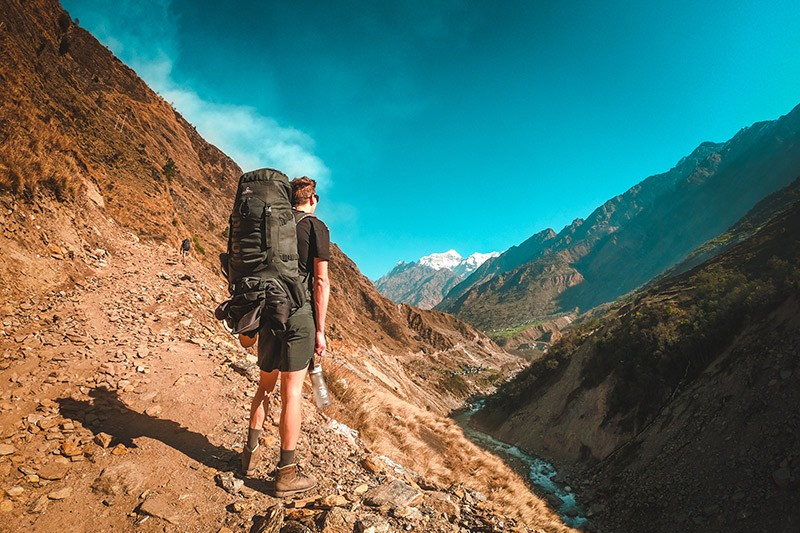
The Manaslu circuit trip is a challenging trek. It takes you around the Manaslu Region in the Manaslu Conservation Area and provides a stunning view of the world's eighth-tallest mountain. This hike may be a good substitute if you've already done the Annapurna Circuit. The Manaslu Circuit Journey is a 14-day excursion that begins in Soti Khola and concludes in Beshi Sahar. It can be extended to 22 days by adding a side trek to the Tsum Valley.
It is one of the most graceful of the 8000-meter giants, flanked to the west by the Annapurnas and to the east by the Ganesh Himal. Different from the Everest Base Camp Trek, which attracts trekkers from all over the world, the Manaslu Circuit Trek typically sees fewer people along its route. It's isolated and physically taxing, but it's also culturally enriching and scenically beautiful.
Trip Inspiration:
Day 1: Drive to Machha Khola from Kathmandu
Day 2: Hike from Machha Khola to Jagat
Day 3: Trek to Deng
Day 4: Trek to Namrung
Day 5: Trek to Sama Gaon
Day 6: Acclimatization at Sama Gaon & Day Trip to Manaslu Base Camp or Pungyen Gompa
Day 7: Trek to Samdo
Day 8: Trek to Dharamsala
Day 9: Hike to Bhimthang via Larkey Pass
Day 10: Trek to Dharapani
Day 11: Drive to Kathmandu
Langtang Valley Trek
Difficulty: Moderate
Duration: 7-10 days
Highlights: Langtang Lirung views, Langtang National Park, Kyanjin Gompa, Kyanjin Ri, Tamang culture
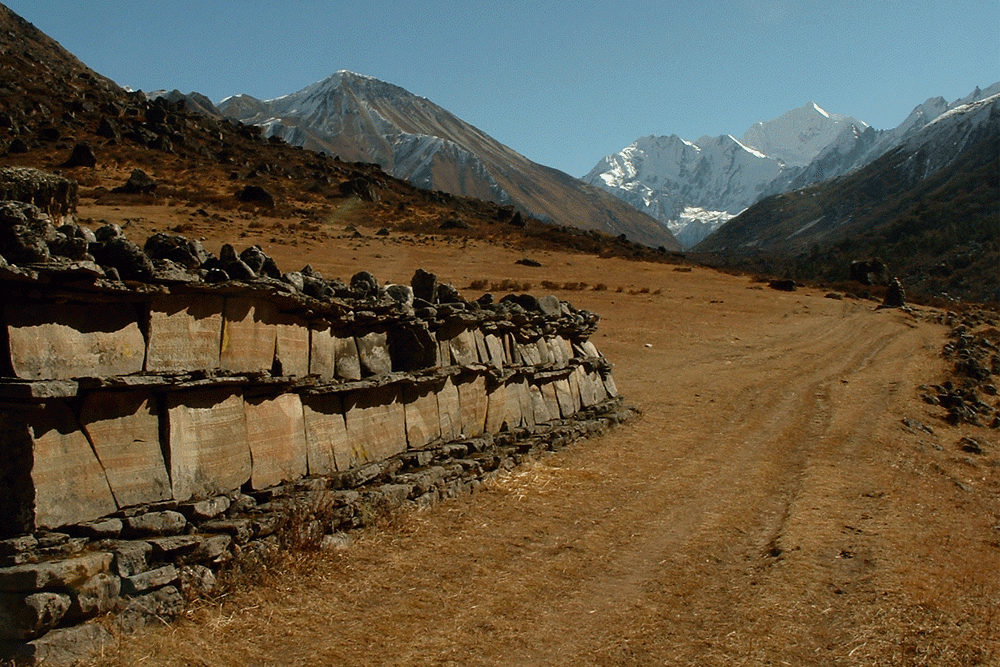
The Langtang Trekking Trail in Nepal is a stunning and fascinating destination not far from the capital city of Kathmandu. It is well-known for its breathtaking views of the mountains, native secret culture, and the Langtang Himalayas ranges.
The Langtang Lirung peak and the particular lifestyle of the famed ethnic group Tamang add authenticity to this journey. The trail takes you to an elevation of 4,000m/13,123 ft, and if you want to go higher, you won't want to miss witnessing the dawn from the Tserko Ri, which is located at 5,000m/ 16,404 feet.
Additionally, this trek offers amazing views of Dorje Lakpa (6,990m / 22,933 ft), Langtang Ri (6,370m / 20,898 ft), and Langtang Lirung (7,245m / 23,769 ft).
Trip Inspiration:
Day 1: Drive to Syabrubesi
Day 2-3: Trek to Lama Hotel, then to Langtang Village
Day 4-5: Trek to Kyanjin Gompa, explore the local area
Day 6: Trek to Kyanjin Ri or Tsergo Ri
Day 7-8: Return trek to Lama Hotel, then Syabrubesi
Day 9: Drive to Kathmandu
(NOTE: If you want, you can include Gosaikunda in your itinerary and make it an ultimate trekking experience.)
Nar Phu Valley Trekking
Difficulty: Challenging
Duration: 14-18 days
Highlights: Kang La Pass, Nar and Phu villages, rugged terrain, Tibetan-Buddhist communities
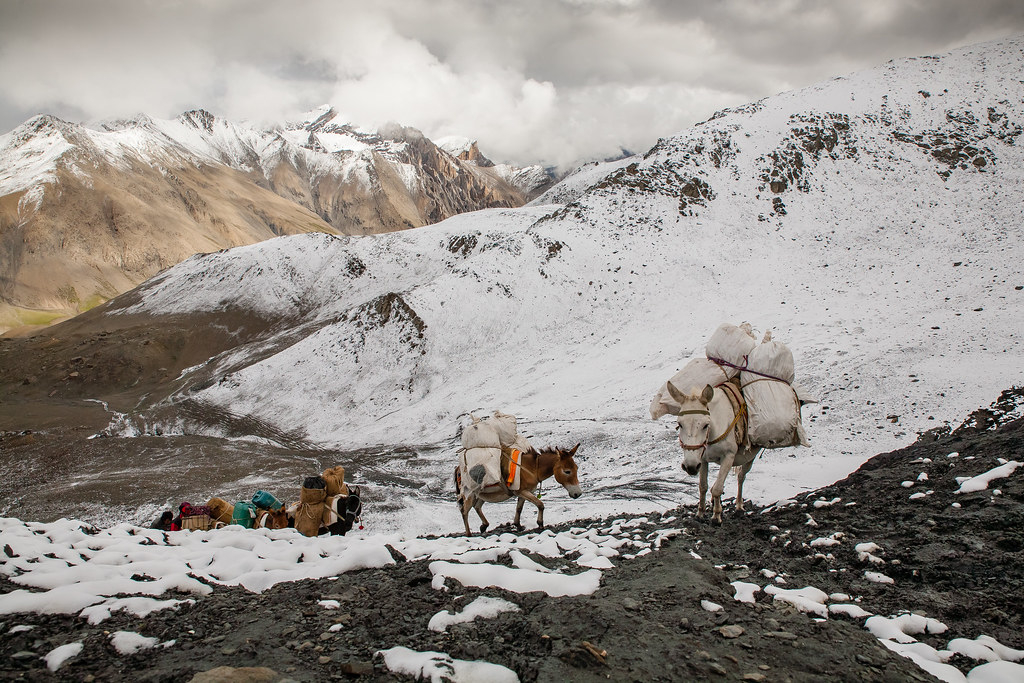
The Nar Phu Valley Trek brings you to the distant settlements of Nar and Phu in the Annapurna area, near Chame. It is one of Nepal's most remote and picturesque areas. Nar and Phu are two distinct but nearby villages inhabited by Khampas (Tibetan refugees).
Additionally, you will have the opportunity to learn about their way of life firsthand.
In addition to these communities, you may see snow-capped mountains, yaks, deep gorges, tight valleys, gorgeous forests, stunning glaciers, and the high passes, Kang La (5,200m).
Also, you can bathe in Tatopani's natural hot spring.
Trip Inspiration:
Day 1: Drive to Koto
Day 2-3: Trek to Meta, then to Phu Village
Day 4-5: Explore Phu Village, then trek to Nar Village
Day 6: Trek to Kang La Pass
Day 7: Descend to Ngawal
Day 8-9: Trek to Manang
Day 10: Drive back to Koto
Day 11: Drive to Kathmandu
Annapurna Base Camp Trekking
Difficulty: Moderate
Duration: 5-12 days
Highlights: Annapurna views, Poon Hill extension, Gurung and Magar villages
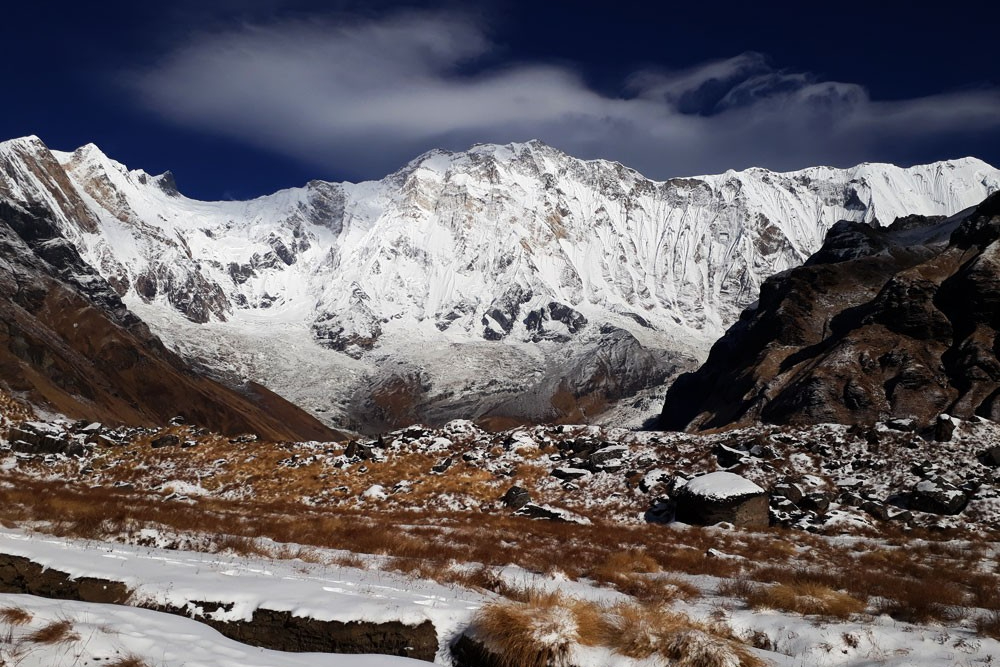
The Annapurna Base Camp Trek is one of the most popular treks in the Annapurna Region. It takes you through different climates, landscapes, and culturally fascinating communities. Views of Fishtail, Hiunchuli, Annapurna Massif, Dhaulagiri, Tilicho, Pisang, Pungda Danda, and countless other peaks can be seen from the Camp.
You'll stop by the famous Poon Hill viewpoint and rest in the natural hot water pool at Jhinu Danda along the route.
Mt. Annapurna (8091m) in Nepal is the world's 10th tallest mountain, and the trek to its base camp (4130m/13549ft) is one of the most popular hikes on the planet. Furthermore, we arrive at our destination via Mt. Machhapuchhre (Fishtail), which the Nepalese venerate for its distinctive beauty.
Trip Inspiration:
Day 1: Drive or fly to Pokhara
Day 2: Drive to Ulleri and Trek to Ghorepani Trek to Tikhedhunga
Day 3: Sunrise at Poon Hill, trek to Tadapani
Day 4: Trek to Chhomrong
Day 5: Trek to Bamboo
Day 6: Trek to Deurali
Day 7: Trek to Annapurna Base Camp (ABC)
Day 8: Return trek to Bamboo
Day 9: Trek to Chhomrong
Day 10: Trek to Ghandruk
Day 11: Drive to Pokhara
Day 12: Drive or fly to Kathmandu
Gokyo Lake Trek
Difficulty: Moderate
Duration: 10-14 days
Highlights: Gokyo Ri views, Gokyo Lakes, Everest views, Sherpa villages, high-altitude freshwater lakes
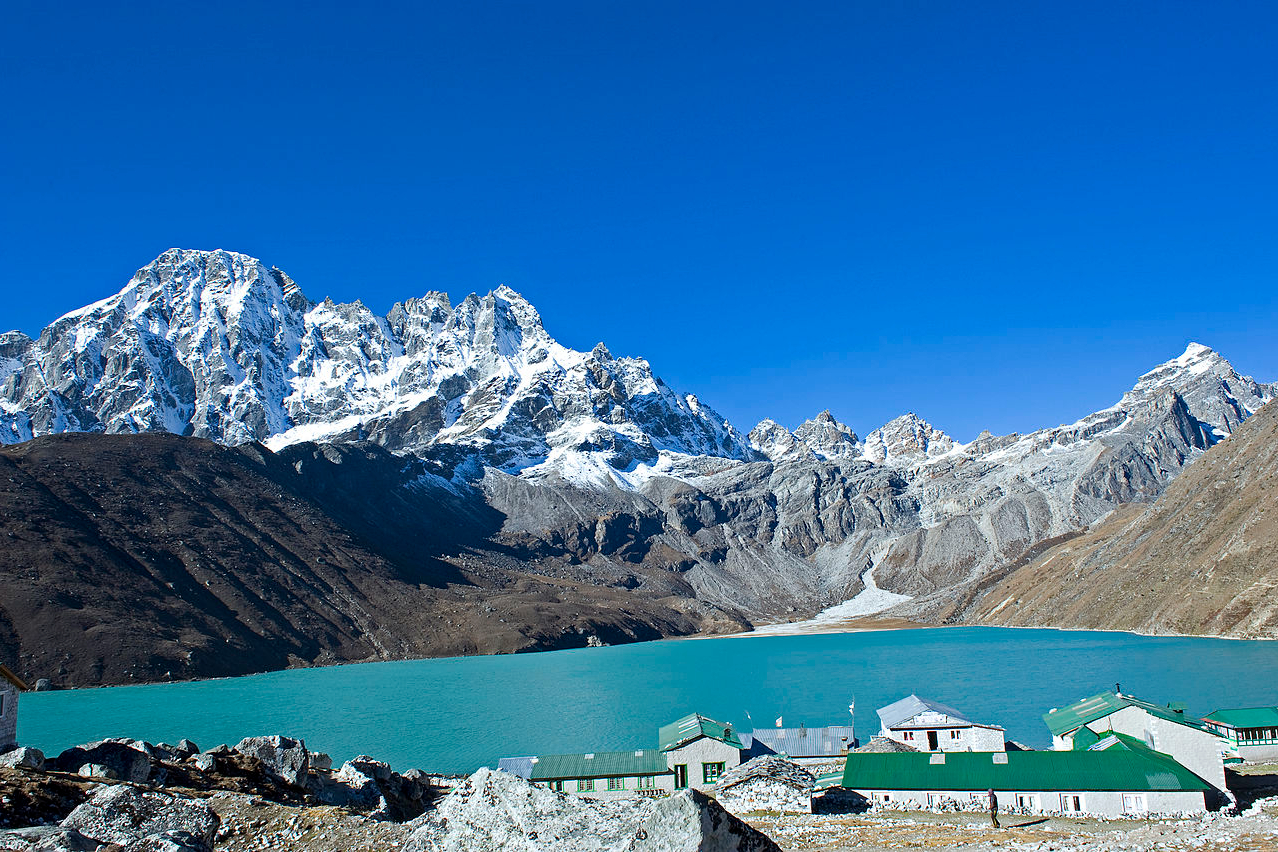
The Gokyo Lakes Walk is an alternative to the typical Everest Base Camp trek, but it still includes breathtaking vistas of Everest and overnight accommodations in Namche Bazaar, the gateway to the Khumbu Region.
The Gokyo Lakes are six bodies of water, or pristine lakes, found in the Gokyo Valley at elevations ranging from 4700 to 5000 meters. Gokyo Valley is part of the Sagarmatha National Park.
The lakes are the world's highest freshwater lake system, a Ramsar site (wetlands of international importance), and are important to both Hindus and Buddhists.
Trip Inspiration:
Day 1: Fly to Lukla, trek to Phakding
Day 2: Trek to Namche Bazaar
Day 3: Trek to Dole
Day 4: Trek to Machhermo
Day 5: Trek to Gokyo
Day 6: Explore Gokyo Lakes and Gokyo Ri
Day 7: Return to Machhermo
Day 8: Trek to Namche Bazaar
Day 9: Return to Lukla
Day 10: Fly to Kathmandu
Upper Mustang Trek
Difficulty: Moderate
Duration: 12-14 days
Highlights: Lo Manthang, desert-like landscapes, Mustang culture, ancient Tibetan-influenced areas, sky caves
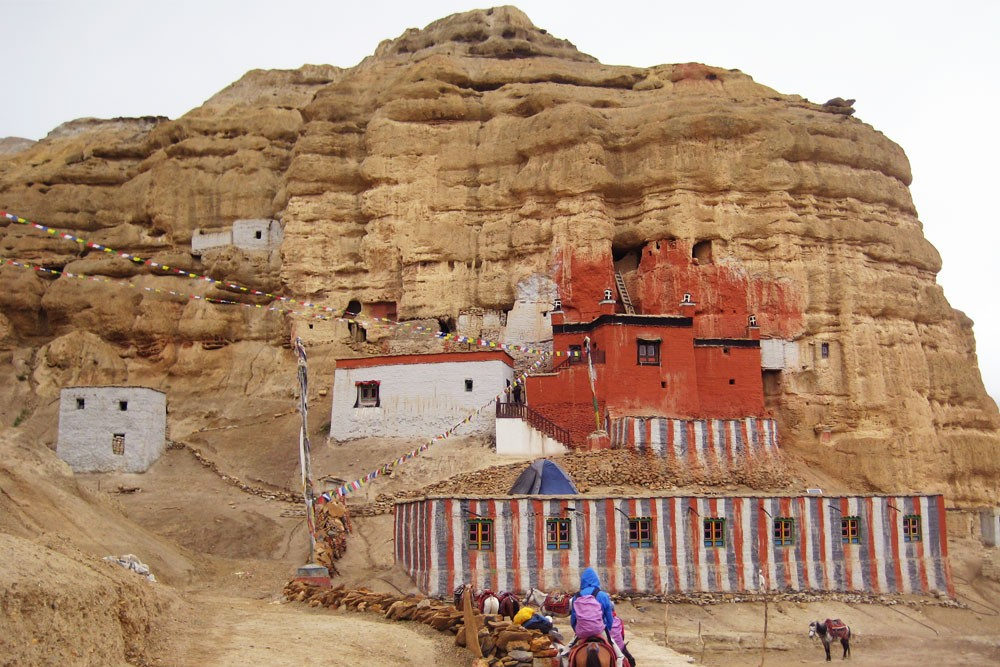
The Upper Mustang hike leads to the Kingdom of Mustang, also known as Lo, and its hidden Buddhist society.
This distant trans-Himalayan mountain region borders Tibet. It has a distinct Tibetan character. The people and culture are strongly influenced by Tibet. The scenery is arid, with high cliffs and rocks. These cliffs and rocks have unique shapes and colours.
Additionally, explore caverns, rock paintings, monasteries, and gompas to learn about the local culture. This fascinating journey includes panoramic views of Nilgiri, Annapurna, Dhaulagiri, and other peaks.
The walk begins in Kagbeni, the gateway to Upper Mustang, and continues across a harsh landscape in the rain shadow of the Dhaulagiri mountain to Lo-Manthang, the seat of the Kingdom of Lo's former Kings.
Trip Inspiration:
Day 1: Fly or drive to Jomsom from Pokhara
Day 2: Trek to Kagbeni
Day 3: Trek to Chele
Day 4: Trek to Syangboche
Day 5: Trek to Ghemi
Day 6: Trek to Tsarang
Day 7: Trek to Lo Manthang
Day 8: Explore Lo Manthang (visit monasteries and sky caves)
Day 9: Trek to Dhi
Day 10: Trek to Kagbeni
Day 11: Drive to Jomsom and Fly to Pokhara
Upper Dolpo Trek
Difficulty: Challenging
Duration: 10-15 days
Highlights: Shey Phoksundo Lake, Shey Gompa, remote lifestyle, Tibetan remoted lifestyle, high-altitude
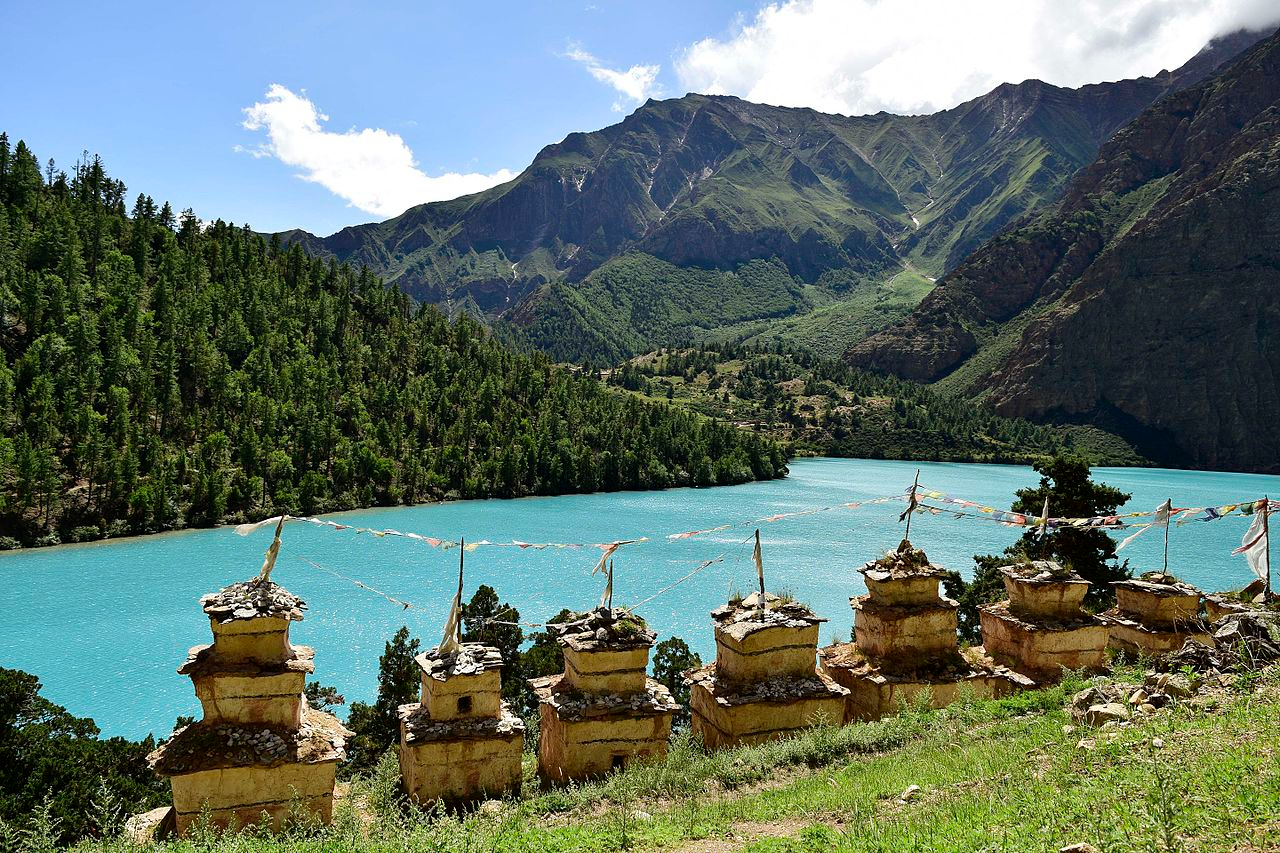
Upper Dolpo is a remote region in Nepal, close to Tibet. The area is known for its rugged landscapes, including high mountains, deep valleys, and arid terrain. The people here follow Tibetan traditions and speak the Dolpo language.
Trekking in Upper Dolpo is challenging due to the high altitudes and rough paths. However, it offers stunning views of snow-capped peaks and unique rock formations. The Shey Phoksundo Lake, with its crystal-clear blue water, is one of the main highlights.
The region is also home to ancient monasteries like Shey Gompa, where Buddhist practices are still followed. Wildlife such as snow leopards and blue sheep can be spotted here. Upper Dolpo is a place where nature, culture, and spirituality come together.
Trip Inspiration:
Day 1: Fly to Nepalgunj
Day 2: Fly to Juphal
Day 3: Trek to Dunai
Day 4: Trek to Tarakot
Day 5: Trek to Laina
Day 6: Trek to Dho Tarap
Day 7: Trek to Numa La Base Camp
Day 8: Cross Numa La Pass, descend to Baga La Base Camp
Day 9: Cross Baga La Pass, descend to Ringmo
Day 10: Explore Phoksundo Lake
Day 11: Return to Juphal
Day 12: Fly to Nepalgunj and to Kathmandu
Kanchenjunga Base Camp Trek (North and South)
Difficulty: Strenuous
Duration: 16-20 days
Highlights: Kanchenjunga views, high-altitude trekking, Rai and Limbu culture
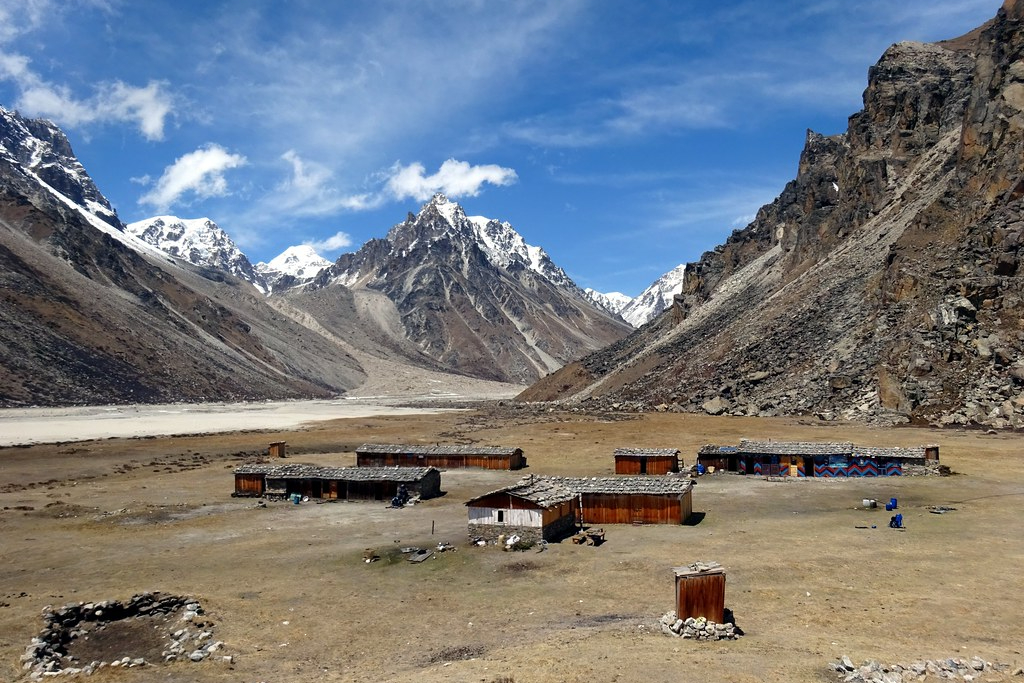
Kanchenjunga Base Camp Trek is one of the great Himalayan paths that run through Eastern Nepal. The climb to Kanchenjunga Base Camp takes you through the Arun Valley, one of Nepal's most scenic hiking destinations.
The Kanchenjunga Conservation Area, which encompasses an area of 2035 square kilometres, is one of the trek's key highlights. The area is home to a diverse range of flora and fauna, as well as species such as Himalayan black bears, musk deer, snow leopards, red pandas, wild boars, and many others.
The road to basecamp passes through alpine grasslands, subtropical trees, a low river valley, a glacial moraine, and rocky scree slopes. Trekkers can enjoy breathtaking panoramic views of enormous mountain peaks like as Lhotse (8516m), Everest (8848m), Kanchenjunga (8586m), Makalu (8481m), and many others throughout the journey.
Trip Inspiration:
Day 1: Flight to Bhadrapur and Drive to Kanyam
Day 2: Drive to Taplejung
Day 3: Drive to Tamor River Bridge and Hike to Suketham
Day 4: Trek to Amjilosa
Day 5: Trek to Gyabla
Day 6: Trek to Ghunsa
Day 7: Rest Day (Optional)
Day 8: Trek to Khambachen
Day 9: Trek to Lhonak
Day 10: Trek to Lhonak-Pang Pema- Kanchenjunga North Base Camp and descend to Lhonak
Day 11: Descend to Ghunsa
Day 12: Trek to Yalung Bara
Day 13: Trek to Oktang
Day 14: Trek to Yalung Base Camp and descend to Tseram (3868M)
Day 15: Descend to Khebang
Day 16: Descend to Hamphu Khola and Jeep drive to Taplejung (1820M)
Day 17: Drive to Bhadrapur
Day 18: Fly back to Kathmandu
Pikey Peak Trek
Difficulty: Easy to Moderate
Duration: 6-7 days
Highlights: Everest view, Pikey Peak, Sherpa culture and villages
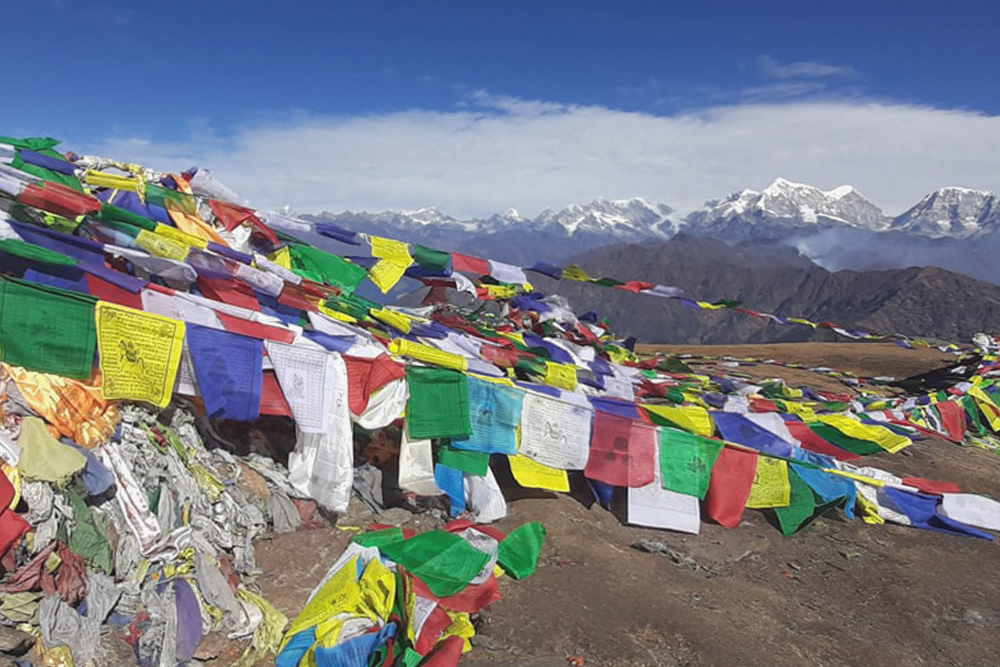
Pikey Peak Trek is an outstanding trekking track that was recently found in the Everest area. It is still less popular with tourists. Mt. Everest, Kanchenjunga, Makalu, Annapurna, Gaurishankar, Lhotse, Numbur, Sishapangma, Nuptse, Thamserku, and Mera Peak can all be seen from Pikey Peak.
Edmund Hillary, the first person to summit Mount Everest, stated that the greatest views of the mountain can be had from Pikey Peak (4067m). It is located in Solu Khumbu, the lowest area of the Everest Region. It is not as strenuous as the Everest Base Camp Trek.
Trip Inspiration:
Day 1: Drive to Dhap from Kathmandu
Day 2: Trek to Jhapre
Day 3: Hike to Pikey Base Camp
Day 4: Summit Pikey Peak, descend to Jhapre
Day 5: Trek to Dhap
Day 6: Drive to Kathmandu
Tips for Trekking in Nepal
Embarking in Nepal trekking is an exciting adventure. To make your trek enjoyable and safe, it’s essential to follow some important tips. Here’s a simple guide to help you prepare.
1. Acclimatisation and Altitude Sickness
Acclimatisation: Give your body time to adjust to higher altitudes. Climb slowly and take rest days.
Altitude Sickness: Symptoms include headache, nausea, and dizziness. Drink plenty of water and descend if you feel sick.
Preventive Measures: Avoid alcohol and heavy meals. Eat light and stay hydrated with enough sleep.
2. Packing the Right Gear
Clothing: Bring layers like thermal wear, waterproof jackets, and sturdy trekking boots.
Gear: Pack a good-quality backpack, sleeping bag, and trekking poles. Use lightweight and durable items.
Essentials: Don’t forget items like sunscreen, a first aid kit, and water bottles.
3. Hiring Guides and Porters
Guides: They help with navigation, language barriers, and local knowledge. They ensure safety and enhance the experience.
Porters: They carry your heavy bags, which allows you to trek comfortably. Make sure to hire from Himalayan Scenery Treks.
4. Understanding Permits and Regulations
Permits: Most treks require permits. Including the TIMS card, restricted area permit and national park permits. Obtain them before starting your trek with Himalayan Scenery Treks.
Regulations: Follow local rules to protect the environment and respect local cultures. Stay on marked trails.
Fees: Check permit fees and apply early to avoid delays.
Explore the many Nepal trekking routes for stunning views and unique experiences. Choosing the right trekking destinations ensures a great adventure.

